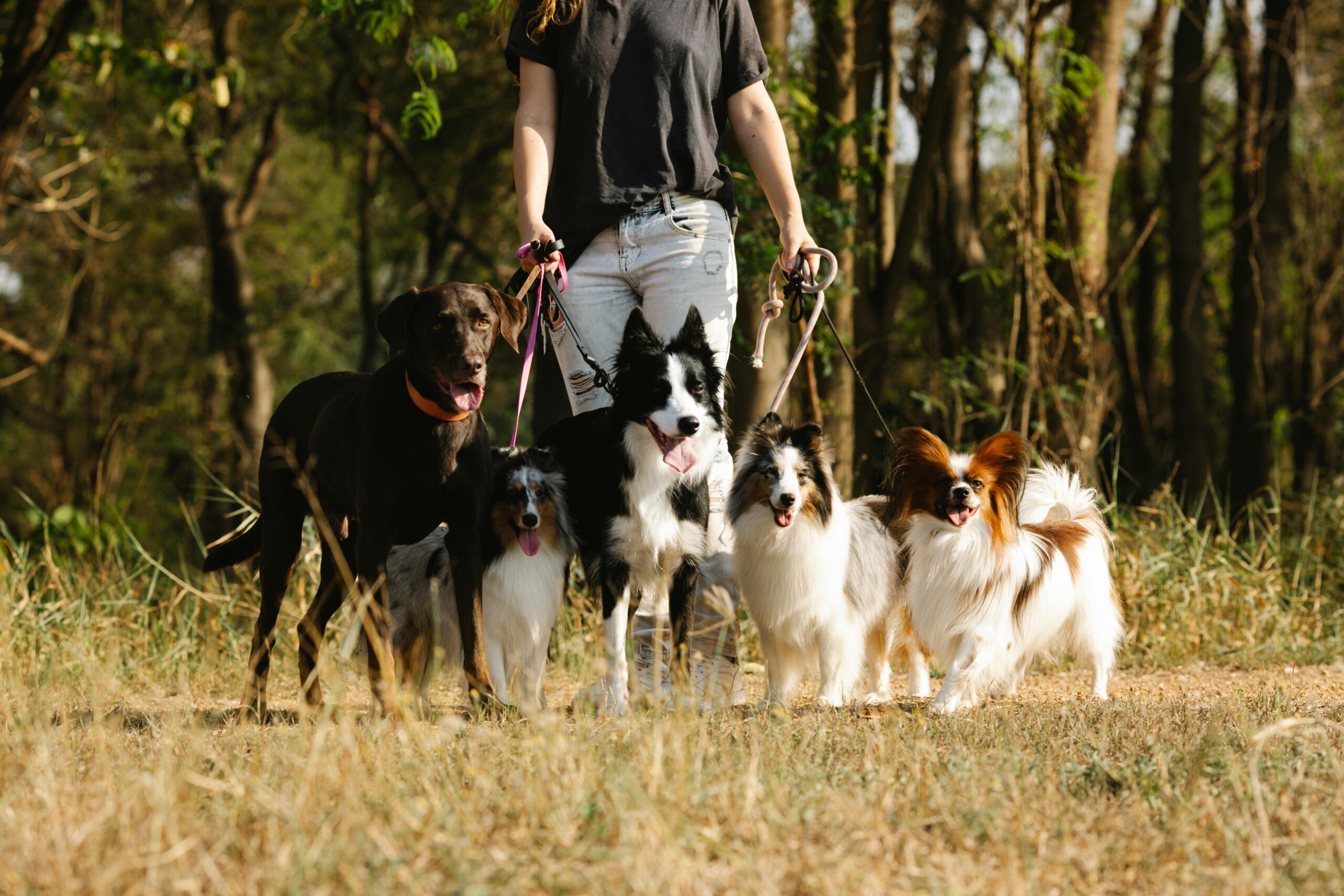Living in a multi-dog household can be a joy. There’s always energy, companionship, and endless entertainment. But without structure, it can also mean chaos. Barking competitions, resource guarding, and sibling rivalry are common when two or more dogs share a space.
As a professional dog trainer in Toledo, I’ve seen both sides: homes where multiple dogs coexist peacefully and homes where owners feel overwhelmed. The difference almost always comes down to structure, consistency, and training.
Here’s how to create harmony in your home when you have more than one dog.
Establish Yourself as the Leader
The first step in managing multiple dogs is making sure they look to you for direction. If you don’t set the rules, the dogs will.
Ways to reinforce leadership:
- Feed dogs only after they sit and wait calmly
- Have dogs wait at doors instead of rushing through
- Assign place beds to prevent chaos during busy moments
- Give attention equally, but on your terms
When dogs know that you control resources and structure, competition between them decreases.
For more insight into balanced leadership, read our post on what balanced dog training really is. This approach blends structure and reward, which is key in multi-dog environments.
Train Each Dog Individually
It’s tempting to try to train your dogs together, but that often leads to distraction and slower progress. Train each dog one-on-one first so they master commands independently.
Focus on core skills like:
- Sit, down, stay, and come
- Loose leash walking
- Place command for calm separation
- Leave it for impulse control
Once each dog has a solid foundation, bring them together for group sessions. This ensures they’re not relying on each other instead of you.
Use Structure to Prevent Conflict
Dogs in the same household may compete over food, toys, space, or even your attention. Preventing conflict means setting clear boundaries.
Simple rules to reduce tension:
- Feed dogs separately or with distance between bowls
- Supervise play and step in if it escalates
- Provide multiple toys and resting spots
- Rotate high-value items like bones or chews
- Use crates or gates when you can’t supervise
The AKC’s guide to managing multi-dog homes is an excellent resource to better understand how to maintain order and prevent common issues.
Group Training for Better Teamwork
Once your dogs have individual obedience down, group sessions help reinforce cooperation and impulse control.
Great group exercises include:
- Group “sit” before going outside
- Long “down-stay” while you cook or eat dinner
- Walking multiple dogs together with controlled pace
- Practicing recall one dog at a time while others wait
These exercises build harmony and remind your dogs that listening doesn’t stop when siblings are present.
Know When to Step In
Not every disagreement needs intervention, but some definitely do. Dogs will occasionally growl or posture as part of communication. However, fights or bullying behaviors should never be ignored.
Step in if you see:
- Repeated guarding of food, toys, or spaces
- One dog consistently overpowering another in play
- Signs of stress like trembling, hiding, or avoidance
- Escalation from growling to snapping or biting
In these cases, professional guidance can help restore balance before problems worsen.
Professional Help for Multi-Dog Homes
Training one dog is important. Training multiple dogs is essential. Without structure, chaos spreads quickly. Our Basic & Advanced Obedience programs are designed to help multi-dog households by teaching clarity, consistency, and cooperation.
Final Thoughts
A multi-dog home can be the best kind of home, but only if structure and training keep everyone on the same page. With leadership, clear boundaries, and consistent reinforcement, your dogs can learn to coexist peacefully and even strengthen each other’s progress.
If you need help managing multiple dogs under one roof, we’re here to guide you. Contact us today to create harmony in your household.




